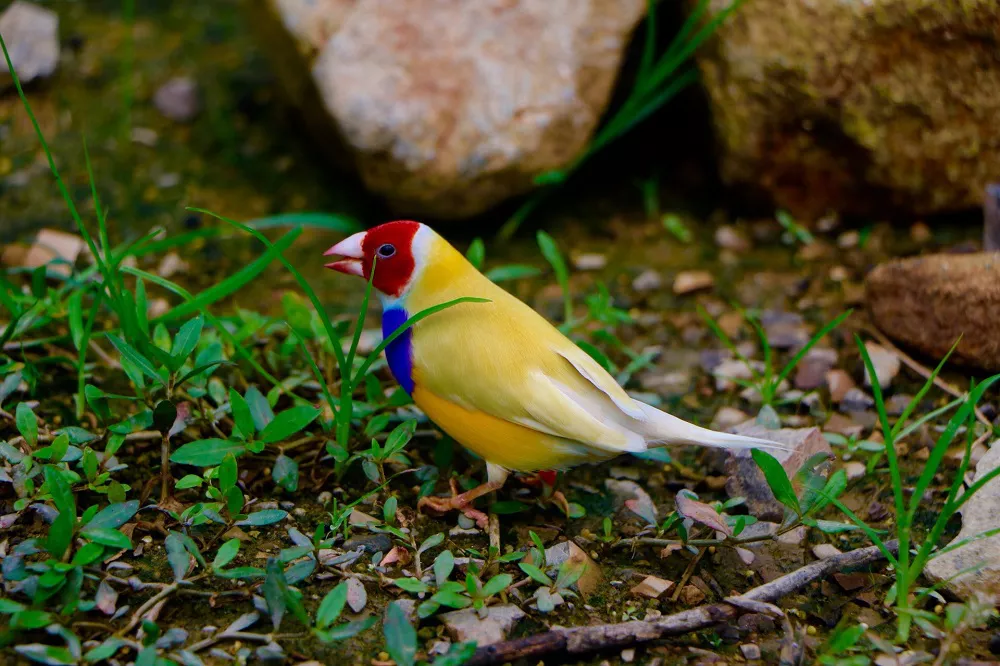Gouldian finches, also known as rainbow finches, are a species of small, brightly colored birds native to the grasslands of northern Australia. These finches are highly sought after by bird enthusiasts for their stunning plumage and playful personalities. One question that often arises among Gouldian finch owners is whether these birds mate for life. In this article, we will take a closer look at the mating behavior of Gouldian finches to answer this question.
What is Mating for Life?
Mating for life, also known as monogamy, refers to the practice of an animal forming a long-term bond with one partner for the purpose of raising offspring together. This type of mating behavior is commonly observed in birds, but it can also be found in other animals such as wolves, beavers, and swans.
Gouldian Finch Mating Behavior
In the wild, Gouldian finches typically mate during the rainy season, which is from November to April in their native Australia. During this time, male Gouldian finches will perform courtship displays to attract a female mate. These displays can include singing, dancing, and showing off their brightly colored feathers.
Once a pair has formed, the male will continue to court his mate through feeding and grooming behaviors. The female will then choose a suitable nesting site, usually in a tree cavity or a nest box provided by a human owner. The male will help to construct the nest using materials such as twigs, grasses, and feathers.
After the nest is completed, the female will lay a clutch of 4-8 eggs, which both parents will take turns incubating for approximately 14 days. Once the eggs hatch, both parents will work together to feed and care for the chicks until they fledge, or leave the nest, at around 3-4 weeks of age.
Do Gouldian Finches Mate for Life?
While some bird species are known to mate for life, the mating behavior of Gouldian finches is not quite as straightforward. Gouldian finches can form strong pair bonds that last multiple breeding seasons, but they are not strictly monogamous.
In fact, a study conducted by researchers at the University of Sheffield found that up to 23% of Gouldian finch nests contained chicks that were sired by a male other than the female’s social partner. This behavior is known as extra-pair copulation, and it is not uncommon in many bird species.
So while Gouldian finches may not mate for life in the traditional sense, they do form long-term pair bonds that can last for several years. These pair bonds are strengthened through courtship behaviors and shared parental duties such as feeding and caring for their offspring.
Benefits of Pair Bonding
Even though Gouldian finches are not strictly monogamous, there are still benefits to forming long-term pair bonds. Pair bonding allows for more efficient division of labor during the breeding season, which can increase the survival rate of their offspring.
In addition, pair bonding can also provide emotional support for both partners. Studies have shown that birds that form strong pair bonds experience lower levels of stress hormones and have better overall health than those that do not form such bonds.
Conclusion
In conclusion, Gouldian finches do not strictly mate for life, but they do form long-term pair bonds that can last for several breeding seasons. These pair bonds are formed through courtship displays and shared parental duties, and they provide benefits such as increased efficiency during the breeding season and emotional support for both partners.
Understanding the mating behavior of Gouldian finches is important for owners who want to create a suitable environment for their birds to thrive. Providing a safe nesting site and ensuring that both partners have access to proper nutrition and health care can help strengthen pair bonds and increase the chances of successful breeding.
Related topics:
- What is a Gouldian Finch?
- How long do Gouldian Finches live?
- What does a Gouldian Finch look like?
- What do Gouldian Finches eat?


 Facebook
Facebook  Instagram
Instagram  Youtube
Youtube 